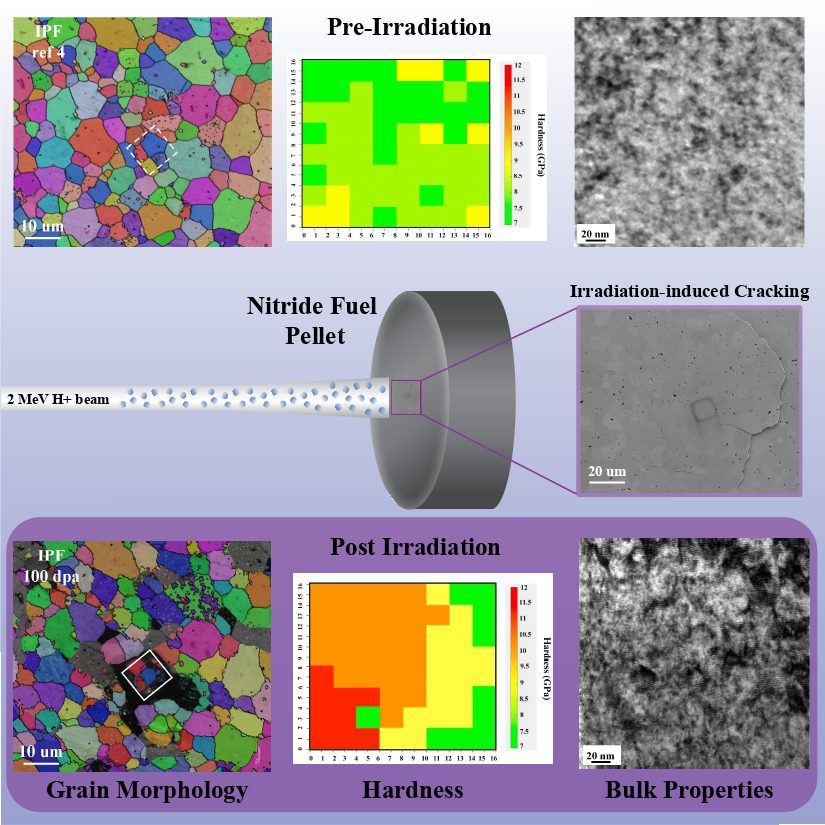
Publication on ‘Proton irradiation-induced cracking and microstructural defects in UN and (U,Zr)N composite fuels’
Abstract: Proton irradiation with a primary ion energy of 2 MeV was used to simulate radiation damage in UN and (U,Zr)N fuel pellets. The pellets, nominally at room temperature, were irradiated to peak levels of 0.1, 1, 10 dpa and 100 dpa resulting in a peak hydrogen concentration of at most 1 at. %. Microstructure and mechanical properties of the samples were investigated and compared before and after irradiation. The irradiation induced an increase in hardness, whereas a decrease in Young’s modulus was observed for both samples. Microstructural characterization revealed irradiation-induced cracking, initiated in the bulk of the material, where the peak damage was deposited, propagating towards the surface. Additionally, transmission electron microscopy (TEM) was used to study irradiation defects. Dislocation loops and fringes were identified and observed to increase in density with increasing dose levels. The high density of irradiation defects is proposed as the main cause of swelling and consequent sample cracking, leading simultaneously to increased hardening and a decrease in Young’s modulus.
Read the paper here.
